Tan Szue Hann recently joined Taiwan-headquartered ‘RD&D’ company MINIWIZ as the Managing Director of its new Singapore office. We hear about his passion for producing architecture and design within the circular economy.

Left: Tan Szue Hann is the Managing Director of MINIWIZ, based in its new Singapore office. Right: The NIKE Feather Pavilion, Shanghai, a brand-activation pop-up pavilion made completely out of recycled trash
March 8th, 2019
What is ‘traditional architecture’, really, and can architecture really be traditional anymore?
These questions and their implications had been on Tan Szue Hann’s mind long before he joined MINIWIZ as Managing Director (which happened recently). There has been no better time to review them, given the increasing interest in and discussion of the ‘circular economy’.
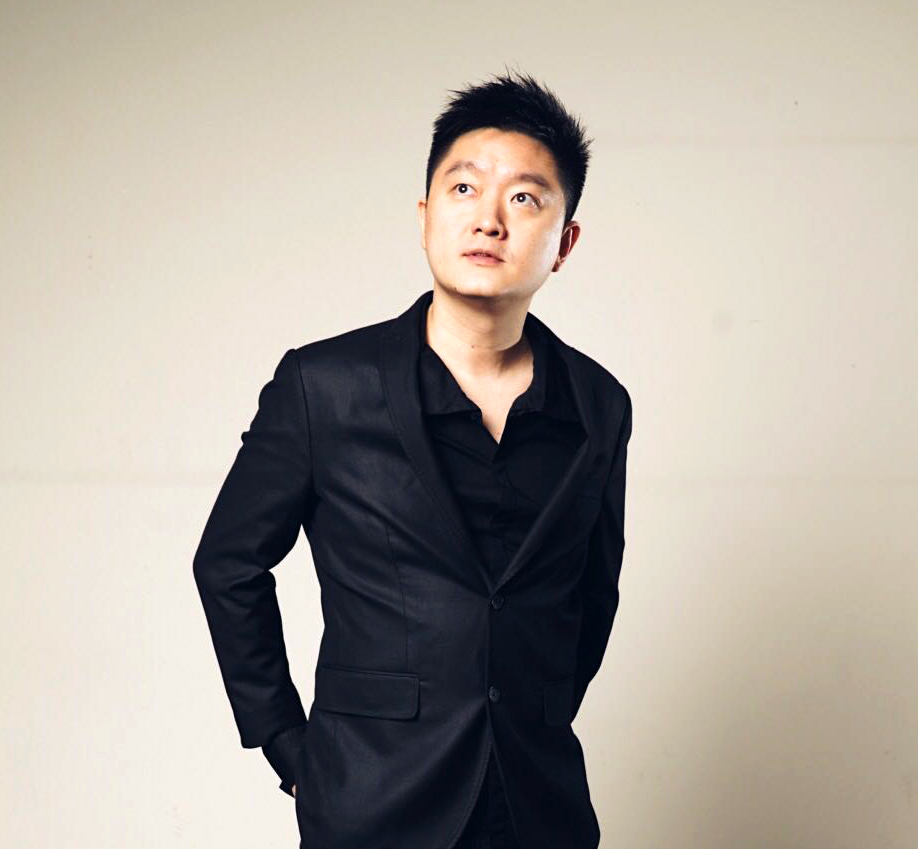
Tan Szue Hann is the Managing Director of MINIWIZ, based in its new Singapore office
As an architectural graduate from the National University of Singapore, Tan started from the ‘traditional’ architectural consultancy route, cutting his teeth at renowned architecture practices both big and small. He shares how he developed an interest in sustainability early on in his career, which led to him eventually heading the sustainability department at Surbana Jurong. Last year, a business meeting with MINIWIZ CEO Arthur Huang started discussions on collaborating with the firm, to talks about bringing MINIWIZ to Singapore, and finally to Tan joining MINIWIZ and setting up their Singapore office.
Fast forward to today, we talk to Tan about movie star Jackie Chan’s involvement with MINIWIZ, making an airplane from recycled materials, and how trash can be both useful and beautiful.
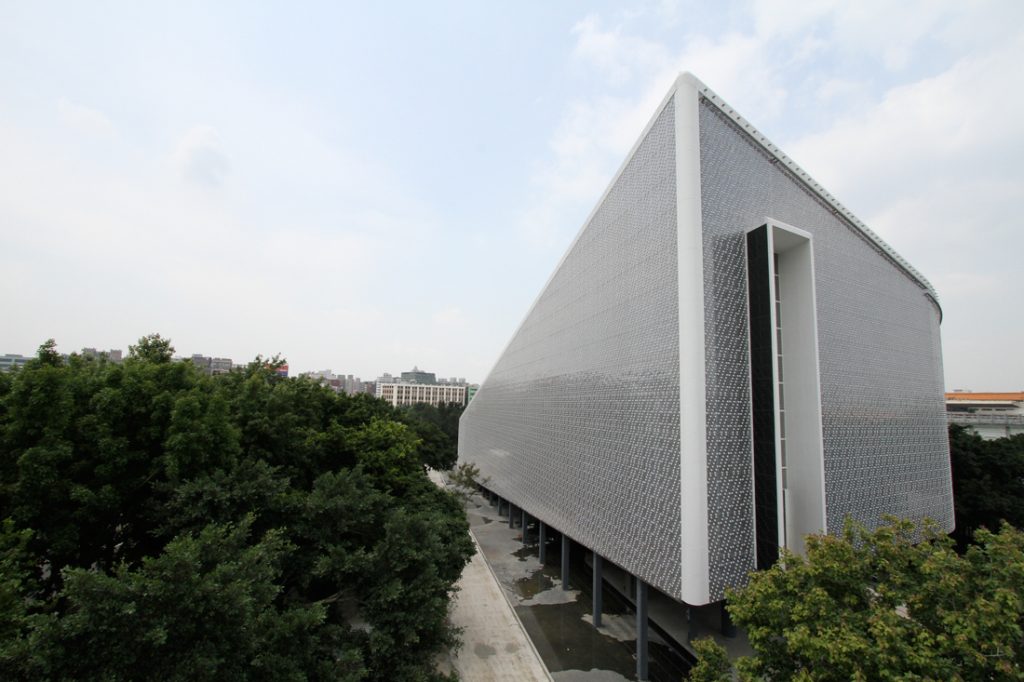
Eco-Ark, Taipei – a water-conservation museum made out of 1.8million PET bottles, recycled into interlocking Pollibrick modules. Completed in 2010, the 130m (L) x 40m (W) x 85m (H) building started its life as a pavilion for the 2010 Taipei International Flora Expo
Tan Szue Hann (TSH): MINIWIZ is a circular economy RD&D [Research, Design & Development] company that turns waste materials into architecture, interiors, furniture, products, fashion and anything else that is worthwhile and meaningful.
We have been around for 16 years. Headquartered in Taipei, we’ve done projects all over the world, and have set up offices in Beijing, Milan and, most recently, Singapore!
We have designed and developed projects from a water conservation museum, to several recycling factories, to a hotel and stuntman training centre owned by Jackie Chan, retail stores and brand activation pop-ups for Nike, down to clothing and merchandise – all out of recycled materials. These aren’t makeshift, rough-and-tumble products, but are high quality goods that we believe will encourage and support the circular economy.
We want to reduce our carbon footprint, minimise pollution, and prove that consumer desires can be satiated with our own trash. We believe that principles of the circular economy can only really be adopted if people can perceive tangible value in the upcycled products.
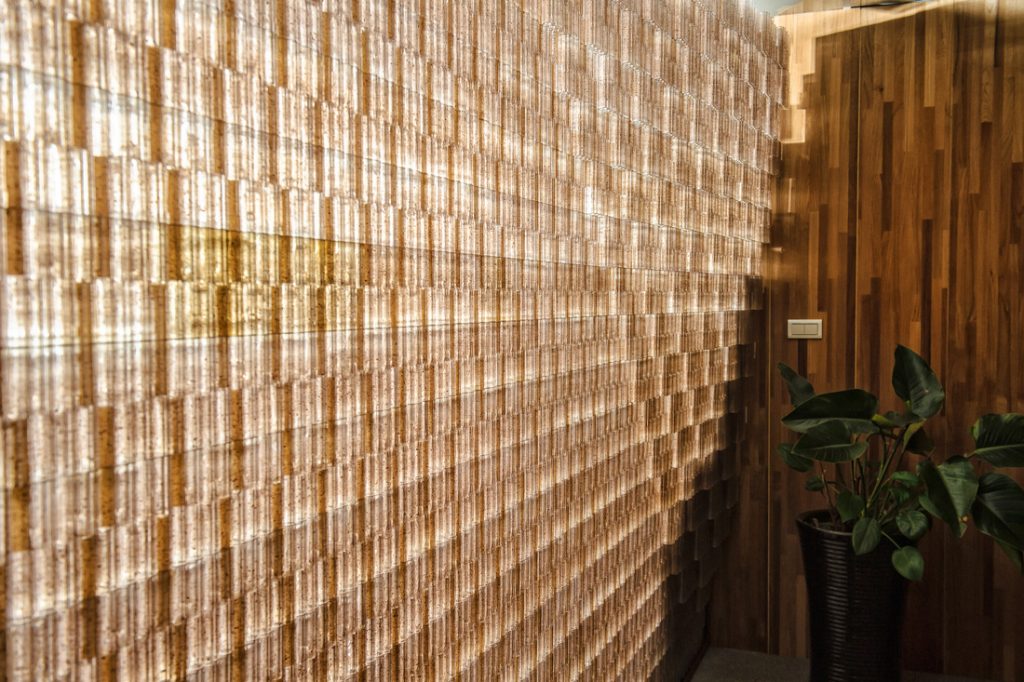
Interior wall at the MINIWIZ Taipei headquarters, made out of the modular Polliber brick, which in turn is made out of recycled polystyrene and rice husks
TSH: Architecture can no longer be about bricks and mortar, steel and glass. The culture of consuming, building, demolishing, throwing, has very little regard for the planet, and we have inadvertently become part of the problem.
When I came across MINIWIZ and its CEO Arthur Huang, I was blown away by the creativity, the passion, the hands-on nature of work, and the spectrum of work that they do. An architect and structural engineer himself, Arthur saw the value of using the very skills an architect has to reinterpret existing materials into new forms and purposes. Our co-founder, Jarvis Liu, is also an architect.
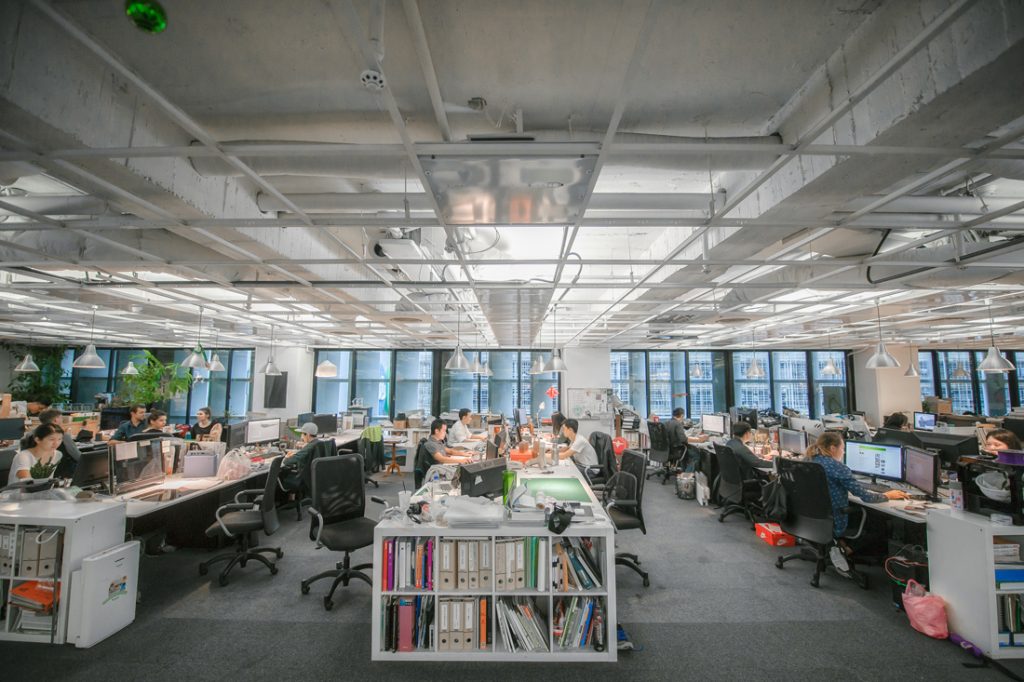
MINIWIZ Taipei headquarters
The principles of extending the life of materials, minimising the energy it takes to produce them, and coming up with beautiful, poetic works of art are precisely what I thought an architect should do. I was also impressed with the ‘groupthink’ culture in the Taipei headquarters where architects, designers and engineers put their hearts and minds into making the world more sustainable. I shared a similar vision with Arthur, and when MINIWIZ intended to set up its Singapore office, there was no way I could turn down the offer to lead the office here.
My role is to extend that vision to Singapore, which is timely as 2019 is the Year Towards Zero Waste in Singapore, and Budget 2019 encourages enterprise development and sustainability. We see ourselves providing a guide to how recycling can be done right, and what amazing products – from architecture to fashion – can come out of proper recycling and regenerative manufacturing practices.
Put simply, I’d like to try to save the world as an architect – or die trying!
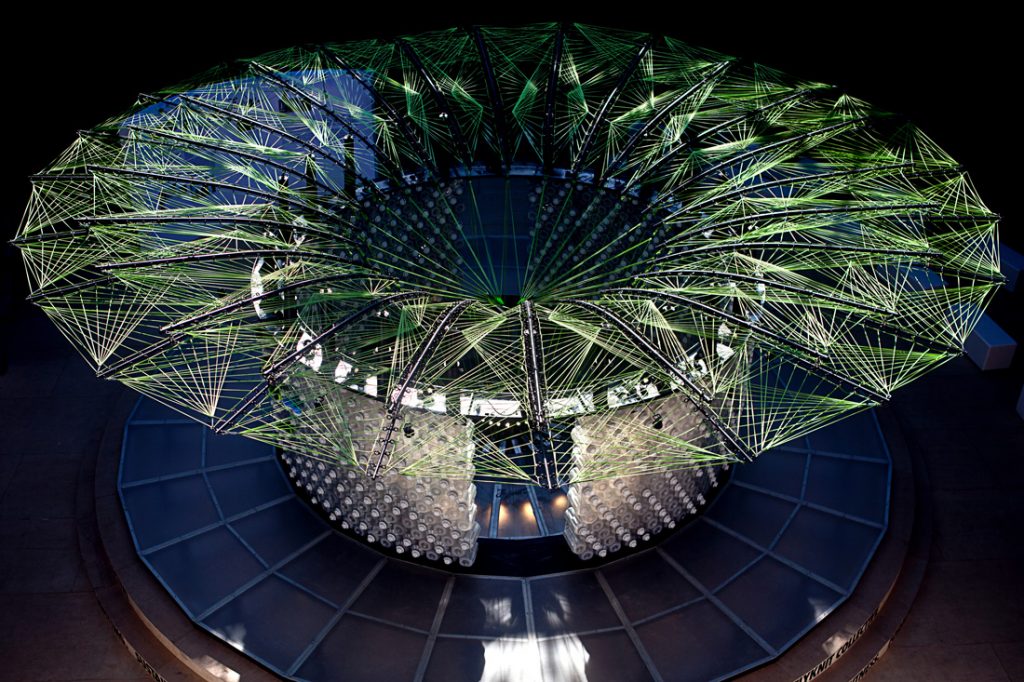
The NIKE Feather Pavilion, Shanghai, a brand-activation pop-up pavilion made completely out of recycled trash
TSH: Typically, the linear model of consumption that we’ve all been sold over the better part of the twentieth century is ‘make, consume, dispose’. That leads to two main problems – pollution and the production of greenhouse gases, and the huge issue with waste disposal worldwide.
The circular economy looks at how these linear processes can be turned into closed loops, where products can find a new life post-consumption, and be ‘reincarnated’ into other purposes.
An extension of this concept is ‘doughnut economics’, posited by economist Kate Raworth, which looks at how human beings and the planet can sustainably co-exist through regenerative and distributive economic systems.
For the planet to be able to sustain our future, we need to reduce wasteful consumption patterns by thinking about how to adopt principles of the circular economy amidst our existing habits. And this is why our architecture and designs need to embody these principles.
TSH: Singapore is a perfect microcosm of what the world can do, in terms of implementation of effective policies and practices. We are sufficiently nimble as a market to adopt best global practices. I think adopting circular economy principles will be rather successful in Singapore; once the infrastructure for recycling is set up, and once we consumers learn how to recycle properly and responsibly. So, both infrastructural change and behavioural change is necessary.
TSH: We are becoming more and more aware of the dangers that overconsumption, and the indiscriminate throwing of waste, can bring. Attitudes are changing, starting from looking at recycled fashion as being chic, and the use of recycled composite materials as being a constituent of green buildings. It’s now cool to sit on recycled upholstery for furniture, and to wear recycled plastic fabrics – you’re making a statement about who you are when you do that.
From a consumerist point of view, this leads to the iconoclasm of traditional definitions of wealth, class and status. And it’s a good change.
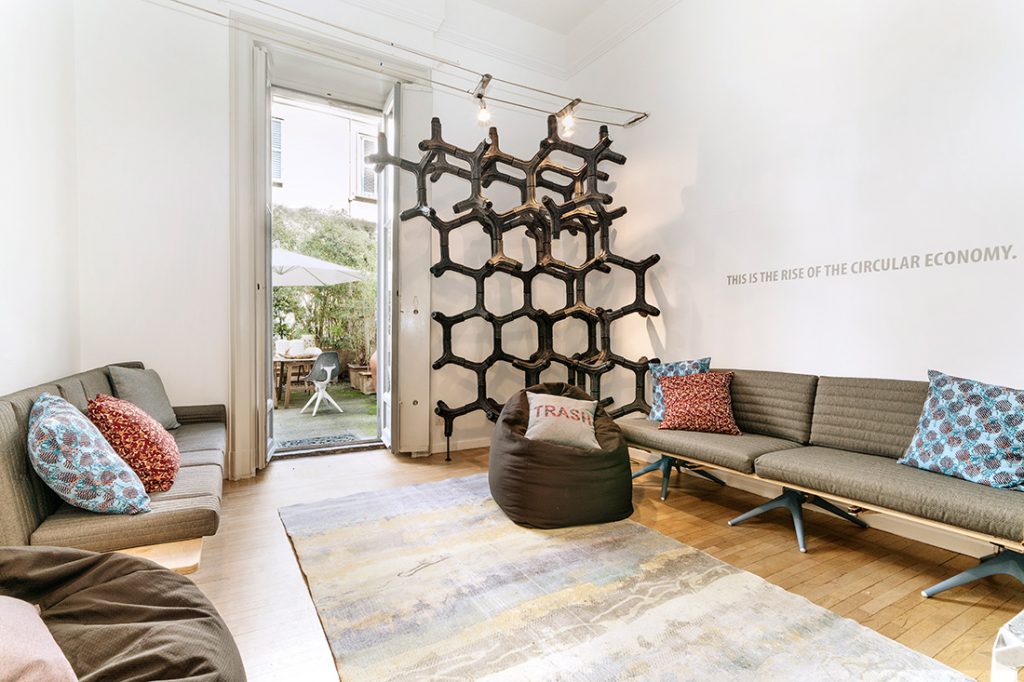
The House of Trash, Milan. The air filters in the background (lined up against the wall) are made from recycled cigarette butts and PET bottles
TSH: We’re all creatures of habit, and breaking the long-accepted habits of buying, consuming and throwing is possibly the greatest challenge. Technology always has to work hand-in-hand with human psychology, and changing these habits can sometimes be challenging. We try to design our products to be as user-friendly as possible, guided by core principles of ergonomics, tactility and colorimetry.
TSH: I propose, simply by looking at what you’re throwing away for three seconds prior to the act of throwing, and thinking if what you’re throwing can be reused or upcycled into something else. An everyday example is the soft drink PET (polyethylene terephthalate) bottle that you only hold in your hand for only about 20 minutes.
If you do have to throw it away, think about recycling it. Rinse out that PET bottle, separate the PP (polypropylene) cap and ring from the bottle, and tear out the PVC (polyvinyl chloride) label from the bottle. We’re designing a system that can enable one to recycle considerately, and we hope to influence responsible, discerning means of waste collection at the infrastructure level too.
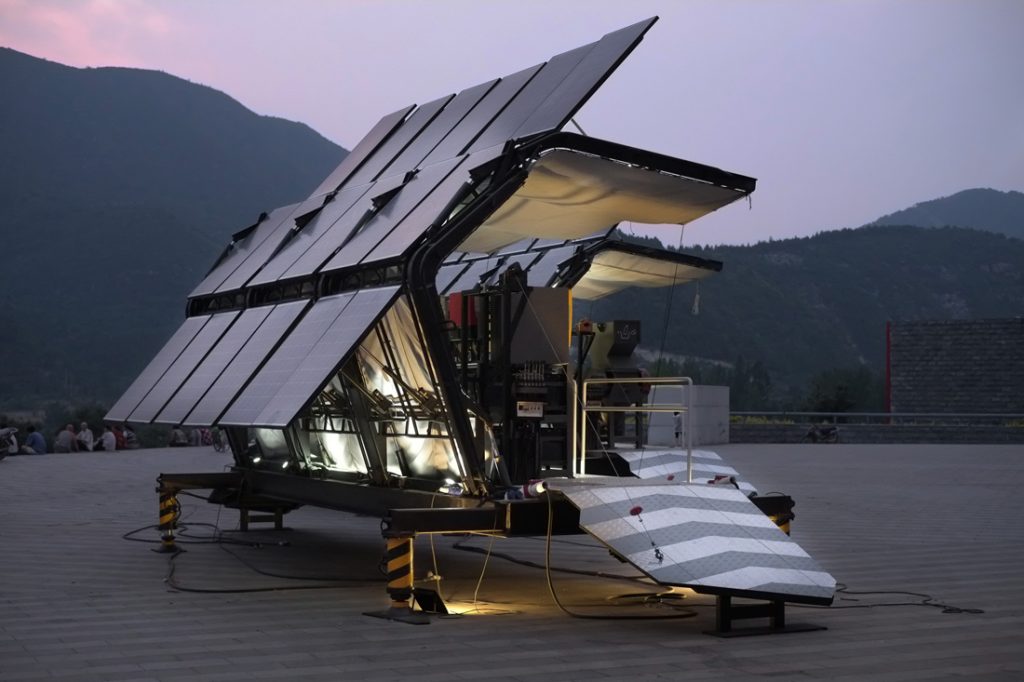
Trashpresso, a portable machine that turns waste into products
TSH: It’s hard to name just one – we have designed modular bricks out of recycled plastics and food waste, and constructed Eco-Ark, a water conservation museum in Taipei, from thousands of recycled PET bottles.
To bring the process of recycling closer to the public, we have created Trashpresso, a portable trash recycling machine, that can be brought to anywhere in the world. Plastic waste goes into one end and building tiles emerge from the other end.
We are in the process of bringing Mini Trashpresso, an even smaller, portable and indoor version, into Singapore, as well as an AI (Artificial Intelligence) bin, which helps the user detect and sort the recycled waste, complete with a credit point system as an incentive.
The drive has always been to use technology to push for new ways of influencing consumption and recycling behaviour, and to best appreciate the architecture, interiors and products that arise from upcycling. Therein lies the art.
TSH: Jackie Chan first saw the work of MINIWIZ in a National Geographic documentary, and managed to track down Arthur and the company. A hero both on the silver screen and in real life, he has championed sustainable practices and has brainstormed and financed several projects with MINIWIZ, including the Jackie Chan University (a stuntman training centre) in Tianjin, China, and the Jackie Chan Innovation Hub (which includes a hotel) in Beijing. He has also worked with us, under the National Geographic Jackie Chan’s Green Heroes program, on bringing Trashpresso to the mountains in Qinghai, China, where plastics were turned into building tiles for a local school.
The collaboration continues with more exciting work, with a very exciting man!
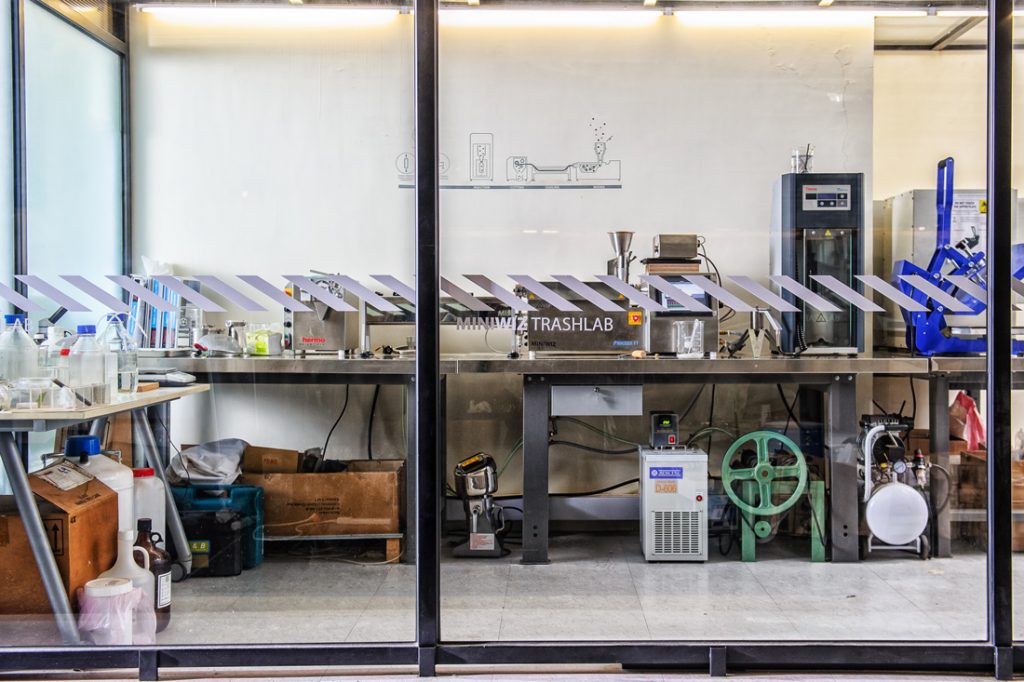
MINIWIZ Taipei headquarters
TSH: MINIWIZ continues to innovate through design and technology. Rather than denouncing consumerism, we strive to create responsible consumption and enhance consumerism by creating works of art that appeal to the senses, and that can be luxurious and competitive, price-wise. We are working with government agencies, developers, hotel operators, coworking spaces, corporates and retailers on exciting architecture, interior and product solutions – watch this space!
We are also working on our Singapore office at the Temasek shophouse on 28 Orchard Road, targeting an end-March completion. Do come down for a cup of coffee, in a recyclable cup of course, and have a look at what an office made out of recycled materials can be like!
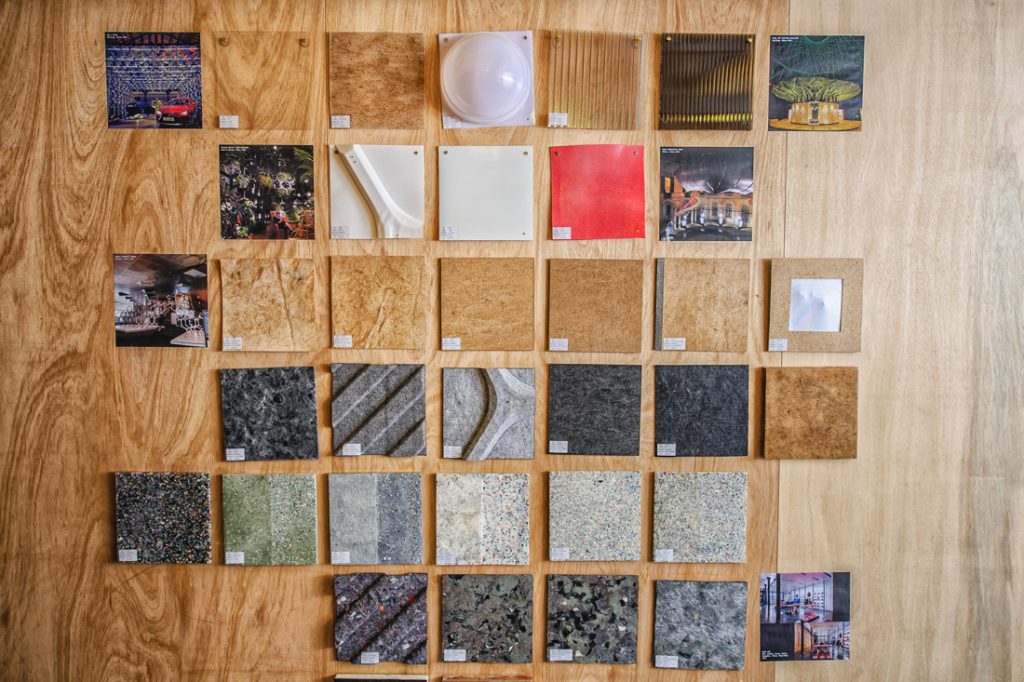
A swatch of recycled materials displayed at the MINIWIZ office
TSH: Within the next few years, with circular construction, commercial retail scaling and a full circular economy pilot between consumers, MINIWIZ technology, and government construction projects and initiatives, Singapore will become the systems headquarters, and the RD&D test hub for consumer behaviour and our infrastructure backbone. Successful solutions developed between Singapore and our international offices will hopefully become scalable solutions for the Southeast Asian, Chinese and European markets.
In five years, I’d like to see more policies encouraging proper recycling behaviour in Singapore, and well-informed, responsible consumers with recycled materials as an integral part of their lives. In a MINIWIZ-designed building, and with MINIWIZ products, of course!
A searchable and comprehensive guide for specifying leading products and their suppliers
Keep up to date with the latest and greatest from our industry BFF's!

Sub-Zero and Wolf’s prestigious Kitchen Design Contest (KDC) has celebrated the very best in kitchen innovation and aesthetics for three decades now. Recognising premier kitchen design professionals from around the globe, the KDC facilitates innovation, style and functionality that pushes boundaries.

Create a configuration to suit your needs with this curved collection.

Marylou Cafaro’s first trendjournal sparked a powerful, decades-long movement in joinery designs and finishes which eventually saw Australian design develop its independence and characteristic style. Now, polytec offers all-new insights into the future of Australian design.

Adaptive reuse is all the rage across the design industry, and rightly so. Here, we present a selection of articles on this most effective approach to sustainability.

Hamish Dounan, Director of Sydney-based landscape architecture studio, CONTEXT, shares his insights on the possibilities of outdoor learning in education design.
The internet never sleeps! Here's the stuff you might have missed

Suitable for applications ranging from schools and retail outlets to computer rooms and X-ray suites, Palettone comes in two varieties and a choice of more than fifty colours.

Set to undergo a $60-million revitalisation, the National Gallery of Australia has announced the launch of a landscape design competition for its Sculpture Garden.